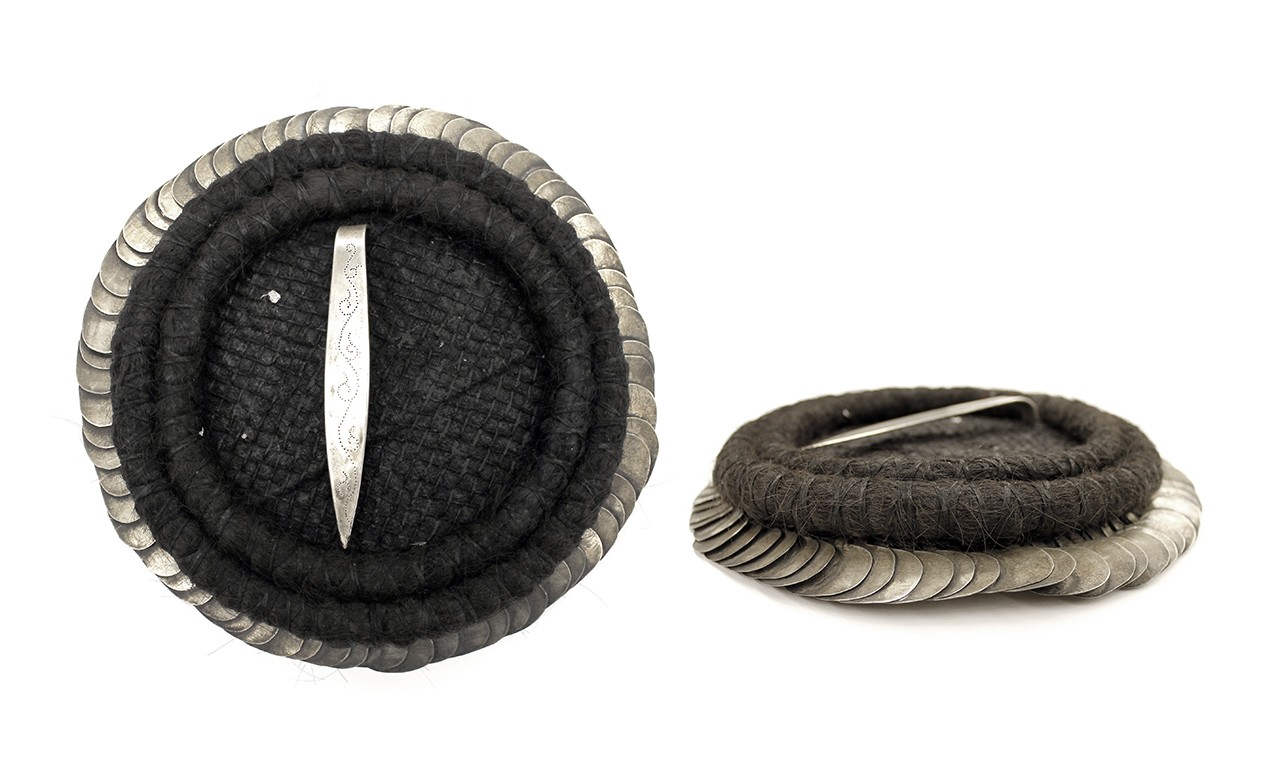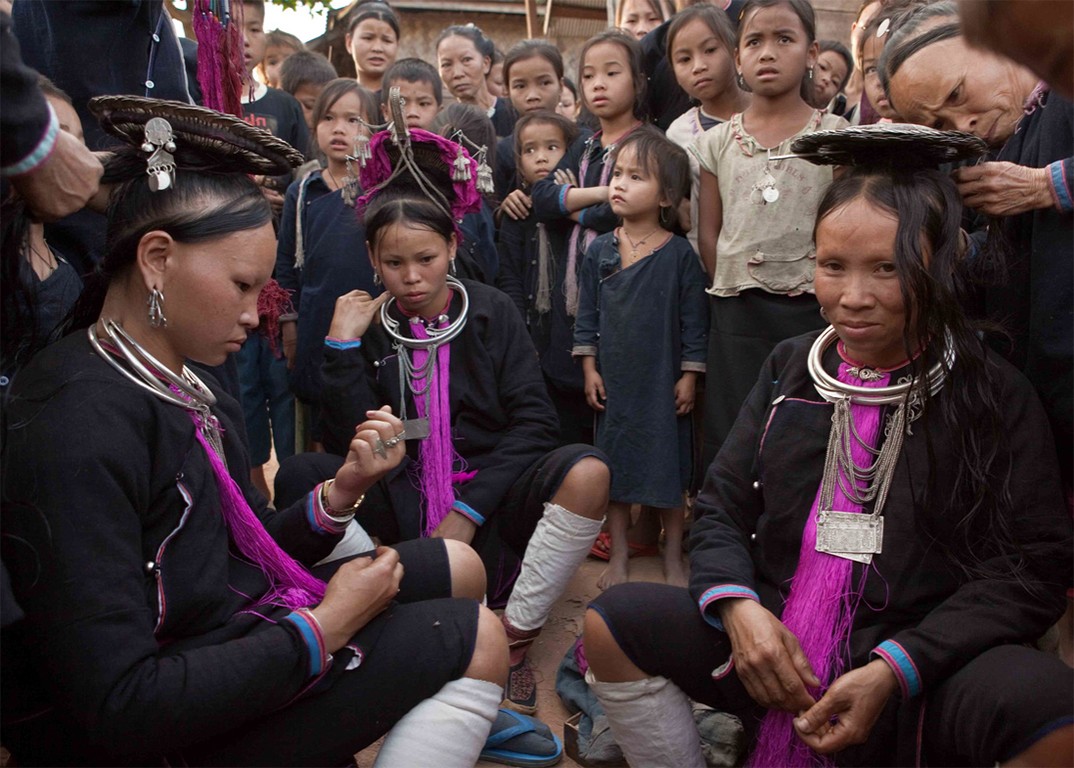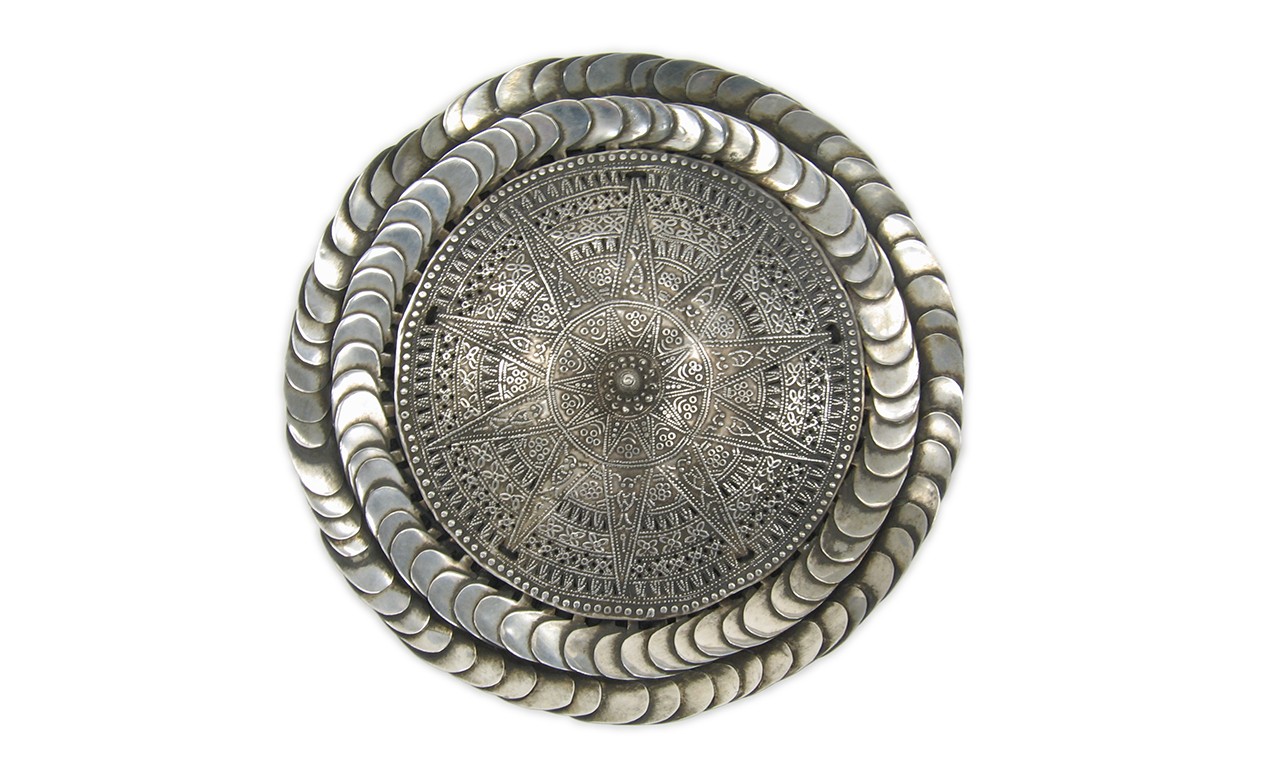© 2023 Kreativa. All rights reserved. Powered by JoomShaper
Silver Blooms: Celestial Crowns of the Yao
 |
| Celestial Crowns, 20th Century Yao culture; Yunnan Province, China Silver, copper, zinc, cloth and hair 2007.23.10, 2015.26.10.1-.2 Gift of Anne and Long Shung Shih and Anonymous Gift |
Sweet Sixteen
Different cultures around the world come of age at different times and mark that rite of passage in different ways. In the United States a sweet sixteen might be commemorated with a party and—depending on the looseness of a parent’s purse strings—keys to a snazzy ride a teen will not be able to drive unaccompanied until at least two years later. The Bowers Museum’s exterior lawns are often host to quinceañera photo shoots, celebrations of a young woman’s coming of age at 15 in Latin American cultures. Tiaras and other crowns are staples of such events, which perhaps means that it should be no surprise that a girl’s coming of age in the Yao culture of Southeast Asia is also celebrated with a crown. In this case though, the crown is made from silver and laden with symbolism.
 |
| Celestial Crown, 20th Century Yao culture; Yunnan Province, China Silver, human hair and cotton; 10 × 10 × 2 in. 2020.8.11 Anonymous Gift |
Tao Yao Plow
The Mien and Mun Yao occupy large regions of northern Laos, Thailand and Vietnam, and southern China. The group has farmed and migrated through mountainous regions for at least 2,000 years which have made them a rare combination of adaptable and slow to adopt new customs. They have a strong cultural identity which they have managed to retain despite being forced to change regularly. Yao communities only rarely get involved in county or national politics and their own organizational structure is based on villages where decisions are made by elders, priests, and head men. The religion of the Yao is Taoism, which emphasizes adherence to a harmonious lifestyle and emphasizes compassion, frugality, and humility. Yao clothing, particularly festival wear, is incredibly colorful and often supplemented by silver.
 |
| Celestial Crown, 20th Century Yao culture; Yunnan Province, China Copper, zinc, silver, cloth and human hair; 9 1/2 × 9 1/2 × 1 3/4 in. 2015.26.10.2 Anonymous Gift |
Pin Puzzles
The history of silver within the Yao culture predates the earliest records, with modern silversmiths not necessarily knowing the origin of many of the symbols on their silver pieces. Indeed, one of the most interesting facets of the crowns is the uniformity of their aesthetic. Certainly, some do feature openwork designs while others do not, but all of them have a 10-point silver star at their center and are surrounded by pins. Silversmiths rely on a great many techniques to create these crowns, many of which are similar to what are used by Miao silversmiths: casting, hammering, repousseé, champleveé, chasing and etching. Once a young woman begins to go through puberty, her family commissions the crowns from a silversmith. It is delivered in its individual components. That may not make it seem like too much of a puzzle from these images, but the 200 or more individual pins in each of these pieces take approximately two days to fit into the human hair substructure.
 |
| Photograph of Yao Mun women at a wedding. Taken by Kees Sprengers, 2010. |
Crown of Stars
Among the Yao, silver is used as the primary currency, ceremonial adornment, and symbolically as a means of keeping the soul in the body. Historically these silver crowns would have been worn every day, though living around other cultures has meant that women are more likely to either wear aluminum pieces instead or forgo them altogether. They were attached to a woman’s hair by the clip we can see underneath one of these examples and might be worn with the pins pulled out slightly. Among Yao subcultures in northern Vietnam, the crown is covered by a red cloth adorned in silver on a woman’s wedding day. The basic headpieces are called celestial crowns, because of their 10-point stars and because the crowns are worn as a sign of religious devotion to the Three Pure Ones, the highest gods in the Taoist pantheon.
 |
| Celestial Crown, 20th Century Yao culture; Yunnan Province, China Silver; 1 1/4 x 6 7/8 in. 2007.23.31 Gift of Anne and Long Shung Shih |
Fool’s Silver
A curious and tragic case study on the ways in which the globalization affects even remote cultures focuses on Yao silver. In the early 1970s two billionaires from Texas began acquiring as much of the metal as they could get their hands on in an ill-fated effort to corner the global silver market. The timing of this fell right at the end of the Vietnam War, and many Vietnamese Yao who had their livelihoods affected by the fighting sold their silver just to feed themselves. Chinese brokers scoured the hillsides of these regions for silver which had risen to more than $50 per ounce—twice what it is today even without accounting for inflation. Everything that they acquired was melted down into ingots and shipped to the United States. The Bowers Museum is fortunate to have so many of these crowns in our collections, as a great many historical pieces of Yao silver adornment were destroyed forever.
Text and images may be under copyright. Please contact Collection Department for permission to use. References are available on request. Information subject to change upon further research.

Comments